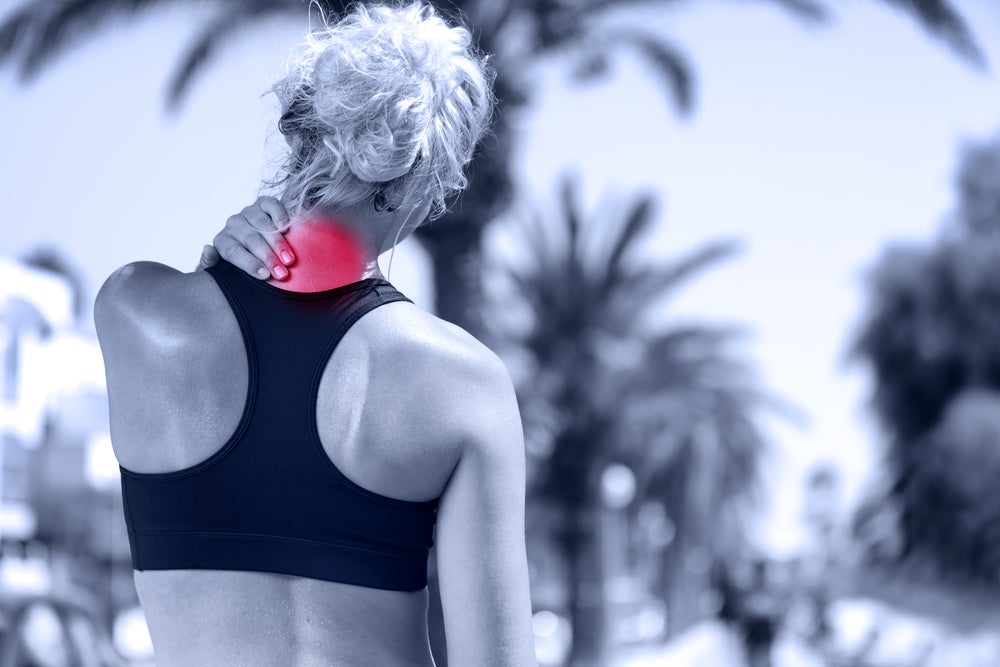Fixing And Preventing Neck Pain Common In Triathletes

Photo: Shutterstock.com
Riding in the aero position can lead to aches and pains in your neck muscles, or perhaps even a spasm or “locking up” sensation.
The human body has a set of muscles that run along both sides of your spine all the way from your tailbone to the back of your head. That’s a lot of muscle.
Localized pain is the main giveaway that your problem is muscular, which is a much simpler issue to treat than something related to your cervical spine. When you get muscle spasms on the sides of your neck, and the pain doesn’t radiate down into your fingers, it’s likely a muscular issue. The causes are usually classic: asking too much of an unprepared or fatigued muscle, overuse or even sleeping on it wrong.
RELATED: Neck Pain In Endurance Athletes
Fix it
Employ dynamic rest. Avoid activities that engage the neck and shoulders. Use lower-body workouts to maintain fitness.
Ice it. Apply ice to the neck for 15 minutes four to six times a day for the first two days.
Try an NSAID. An anti-inflammatory like ibuprofen or naproxen can help with swelling and inflammation.
Go for a massage. Massaging the neck muscles can help a lot. A professional massage therapist will be trained in addressing this type of pain.
Reestablish range of motion. As pain improves, try these exercises to help recondition your neck and shoulders. Once you’re pain-free, move on to more aggressive neck and shoulder conditioning to help prevent the problem from recurring.
RELATED: Seven Tips To Get Comfortable In The Aero Position
Neck stretches
Stand with your hands behind your neck. Bend your neck back and look at the ceiling. Squeeze your shoulder blades together. Hold for a moment and return to the starting position. Work up to 10 reps. Also, try basic head rotation to the left and right, as well as tilting your head to the left and right, for up to 10 reps each.
Basic resistance
Do the same movements described above, but change them to resistance exercises by using your hand to prevent your head from moving, i.e., by putting your hand on the right side of your head and trying to tilt your head to the right while your hand prevents it. Hold for 5 seconds. Do this for tilting your head left and right, turning your head left and right, and bending your head forward and backward. Do 10 reps of each movement.
Shoulder rehab
Shoulder shrugs, holding at the top for 5 seconds, are effective. Another good exercise: Stand with your arms at your sides and elbows bent at 90-degree angles. Shrug your shoulders backward in a circular motion as you squeeze your shoulder blades together. Hold for 5 seconds and return to the starting position. Do 10 reps.
When to call a doctor
In most cases, pain resolves within 1 to 2 weeks with conservative care, depending on the severity of the problem. But if your pain isn’t responding to home-based care within a couple of weeks, schedule an appointment with a sports doctor to see if there are other issues to address. Your doctor may suggest other conservative measures that could help, such as acupuncture. Also, if you have a desk job, consider consulting a physical therapist about ergonomic adjustments you can make to your office chair and desk that could help.